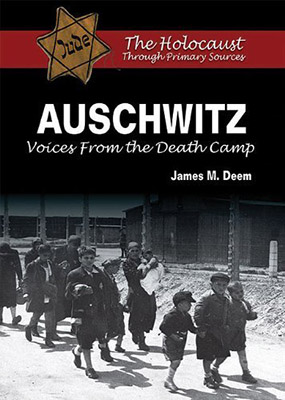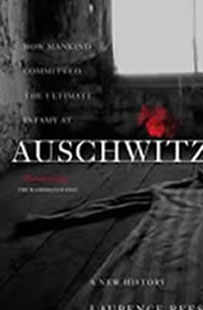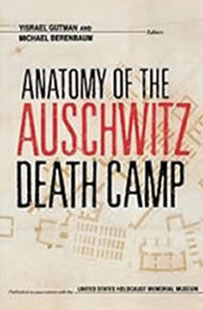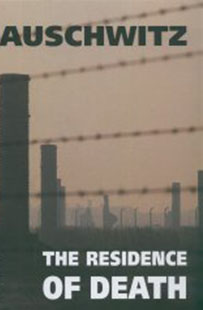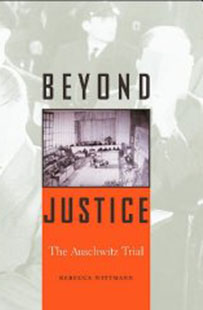Paperback edition, 2012. |
~~ Excerpt ~~ Teacher's Guide ~~ ~~ Suggestions for Visiting Auschwitz ~~ ~~ Related Books by James M Deem: The Prisoners of Breendonk ~~ Kristallnacht ~~ |
A Transport and Selection
In May 1944, Olga Lengyel went to the Cluj, Hungary, train station with her husband, Miklos, and their family. A prominent Jewish doctor, Miklos had been accused by German authorities, who now controlled Hungary, of refusing to use German-produced drugs in his medical practice; he was told that, as punishment, he was to be deported to Germany. Olga and her parents decided to join Miklos on the deportation train; the couple’s young sons would come, too.
But when the family arrived at the station, Olga found a train of cattle cars, many already crammed with Jews from Cluj and other Hungarian towns. Olga and her family were shoved into a car with ninety others, confined to a space that would have held only eight horses. The Germans had lied to them.
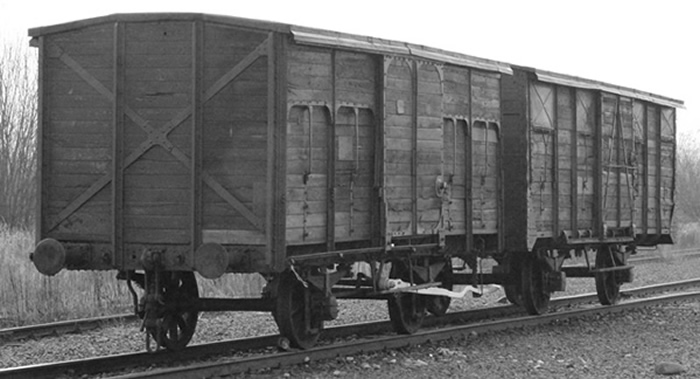
Train car used to transport Jewish prisoners to Auschwitz
During the seven-day journey that followed, the passengers were given no food and almost no water. Half of the people in Olga’s car had no room to sit. A few families had brought chamber pots, and these became makeshift toilets in one corner of the car. When they were full, the pots were emptied out of a small window—the only window in the car.
On the second day, a man died of a heart attack; when the train stopped at the next station, the guards told the dead man’s son to “Keep your corpse. You will have many more of them soon!”
On the third day, a guard shouted through the window at one station, “Thirty wristwatches, right away. If not, you may all consider yourselves dead!” Olga’s son, Thomas, gave up the wristwatch he had been given in third grade.
The guard returned, demanding fountain pens and briefcases. The third time, he promised that, if the passengers gave him their jewelry, he would bring them a bucket of water, the first water they had been offered on the trip. When the jewelry had been collected, a bucket of water was lowered into the car. But many of the passengers didn't get a drop.
During the next four days, more people died from disease, from heat, from thirst, from hunger. On the seventh day, the train reached its final destination. When the train door was finally opened, the trainload of Jews had no idea where they were. Confused and frightened, they were ordered out of the cattle cars by German soldiers. Men were told to stand in one line; women and children in another. Olga saw thousands of Jewish passengers standing on the platform. Nearby, emaciated men in striped prison uniforms took their belongings from the train. Then they removed the corpses from each car.
~~~
It was only later—after she was shorn of her hair, searched, disinfected, and dressed in old clothes—that Olga learned where she was. She and her family had been taken to Auschwitz, a concentration camp in German-occupied Poland that had become a death camp for Jews and others that the Nazis considered undesirable. After they left the train platform, Olga’s sons and parents had been taken to a gas chamber and killed with everyone else in the left-hand line....
~~~
Copyright © 2012 James M. Deem. This excerpt is taken from Auschwitz: Voices from the Death Camp (Berkeley Heights, NJ: Enslow). All rights reserved.
~~~
You can also read Olga Lengyel's own complete account of her journey to and her life in Auschwitz. I highly recommend it.
